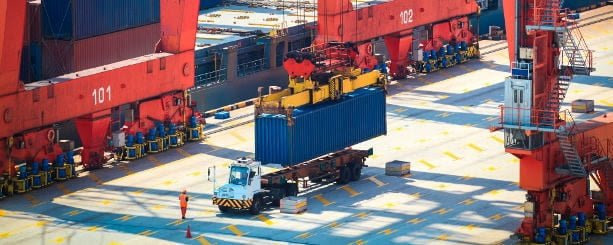Importing Insider Newsletter
Stay ahead of your competitors. Get access to our latest content.
How much should you pay in Import duties and taxes? That depends on the Customs valuation. If incorrectly declared, you’ll pay too little – or too much – in Import duties, VAT or other taxes.
In this article, we explain what every Importer must know about Customs valuation when buying from Asia.
Keep reading, and get the answers to the following questions:
1. How do I calculate the Customs value in my country or market?
2. How can I be sure that the correct Customs value is declared?
3. Why do many suppliers deliberately reduce the Customs value?
4. What kind of risks do I face if the Customs value is too low?
What is the Customs Value?
The Customs Value is the number used by the Customs authorities to calculate Import duties, fees and other taxes.
Normally, the Customs Value is declared on the Bill of Lading.
How can I calculate the Customs Value?
That depends on the market. For example, the Customs value is based on the FOB (Free on Board) price in the United States. The FOB is basically the unit cost.
In the European Union, however, the Customs value is based on the CIF cost – whichincludes the freight cost and insurance (in addition to the unit price).
Hence, the shipper must declare the value based on the destination, which of course also requires the shipper to know (or, more accurately, be informed) of the correct Customs valuation method.
Are costs for molds, prototypes and services part of the Customs value?
Yes. What many Importers don’t know is that the declared value also includes costs for molds, samples and related services.
Hence, buyers cannot reduce the declared value by declaring part of the payment as a cost for design services. However, this only applies if you pay for design (or other) services abroad.
Services purchased locally are not part of the declared value.
However, there are some services, performed abroad, that are generally exempt from inclusion in the Customs value. Sourcing and Quality Assurance services, for example.
Molds and product samples are also part of the customs value. The Importer is often allowed to divide the cost of the tooling and samples over multiple shipments – or pay everything up front.
What can happen if the Customs Value is not properly declared?
Undervaluing the declared value amounts to tax fraud and is a criminal offense.
This is also a common practice, on everything from small parcels to containers. A practice that is estimated to cost the European Union as a whole, as much as €80 million in lost import duties.
How can the authorities check if the declared Customs Value is correct?
The Customs authorities have access to tools that can flag suspicious shipments. If the total declared value is deemed artificially low, the cargo is flagged and the Importer may be asked to provide additional evidence of the transaction value.
However, an artificially reduced Customs valuation may be discovered months, or even years, after entry.
The tax authorities may compare your records (i.e., compare the Commercial Invoice value to the actual transaction amount) during a company audit.
The Customs authorities can also access records, which ensures that importers cannot deliberately declare a large number of shipments below the customs threshold, in order to avoid paying import duties.
Surprisingly, we keep getting requests from Importers looking for guidance on how to game the system. We can assure you that there are no easy tricks that the authorities haven’t seen already.
How can I be sure that my supplier or freight forwarder declares the right Customs Value?
By not assuming that they will declare the correct value to begin with.
The formula for success is simple:
1. Calculate the Customs value according to the valuation method in your market
2. Inform your supplier and/or freight forwarder of the Customs value
3. Request the supplier and/or the freight forwarder to provide you with copies of the Bill of Lading and Commercial Invoice (to verify that the correct value is declared)
Case Study: United States (FOB)
- Unit price: $12.5
- Quantity: 2200 pcs
- Tooling Cost: $500
- Transportation costs to Port of Loading: $200
- Transportation costs to Port of Destination: $1200 (Not included)
- Calculation: $12.5 x 2200 pcs + $500 + $200 = $28,200
Case Study: European Union (CIF)
- Unit price: $12.5
- Quantity: 2200 pcs
- Tooling Cost: $500
- Transportation costs to Port of Loading: $200
- Transportation costs to Port of Destination: $1200
- Calculation: $12.5 x 2200 pcs + $500 + $200 + $1200 = $29,400
Why do some Asian suppliers understate the Customs Value?
There are two reasons.
First, some manufacturers think they are doing their buyers a favor.
Second, most suppliers don’t employ international taxation lawyers. They simply don’t know the Customs valuation laws of every country in the world – even major markets such as the US and EU.
It is your job to calculate the Customs value and inform your supplier accordingly.
Customs Value by Country or Market
| Country / Market | Valuation Method | Read more |
|---|---|---|
| United States | FOB | External link |
| European Union | CIF | External link |
| United Kingdom | CIF | External link |
| Australia | FOB | External link |
| New Zealand | FOB | External link |
| Canada | FOB | External link |
| Singapore | CIF | External link |
| Malaysia | CIF | External link |
CIF (Cost Freight Insurance) = Product Cost + Insurance + All Transportation costs to the Port of Destination
FOB (Free on Board) = Product Cost + Transportation costs / Export clearance costs in the supplier’s country
Buy now...
Great values for your money...
USD$15/book
Get now
+60126694217 Call/Whatsapp
Email: alveolegame@gmail.com

